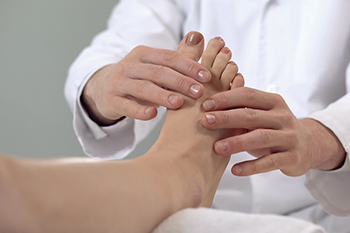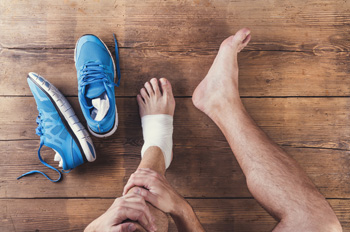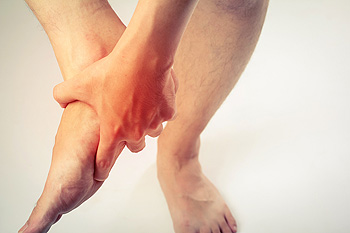
The foot condition known as hammertoe is noticeable because the joints in the second or third toe bend downward at the middle joint. This can make the affected toes appear like a hammer. Hammertoe may develop from wearing shoes that do not fit correctly. This condition is a deformity and there are specific toe stretches that may help with the discomfort. When the toes are stretched, it may help the joint that is bent in addition to helping the bones align normally. Many people who are afflicted with hammertoe pick up marbles with their toes as this may provide strength to the deformed toes. Additionally, the toes may become more flexible therefore reducing the risk of injury. Hammertoe should be treated by a podiatrist so it is strongly urged that you contact one who can properly diagnose and treat this form of arthritis.
Hammertoe
Hammertoes can be a painful condition to live with. For more information, contact one of our podiatrists from Biebel & DeCotiis Podiatry Associates. Our doctors will answer any of your foot- and ankle-related questions.
Hammertoe is a foot deformity that affects the joints of the second, third, fourth, or fifth toes of your feet. It is a painful foot condition in which these toes curl and arch up, which can often lead to pain when wearing footwear.
Symptoms
- Pain in the affected toes
- Development of corns or calluses due to friction
- Inflammation
- Redness
- Contracture of the toes
Causes
Genetics – People who are genetically predisposed to hammertoe are often more susceptible
Arthritis – Because arthritis affects the joints in your toes, further deformities stemming from arthritis can occur
Trauma – Direct trauma to the toes could potentially lead to hammertoe
Ill-fitting shoes – Undue pressure on the front of the toes from ill-fitting shoes can potentially lead to the development of hammertoe
Treatment
Orthotics – Custom made inserts can be used to help relieve pressure placed on the toes and therefore relieve some of the pain associated with it
Medications – Oral medications such as anti-inflammatories or NSAIDs could be used to treat the pain and inflammation hammertoes causes. Injections of corticosteroids are also sometimes used
Surgery – In more severe cases where the hammertoes have become more rigid, foot surgery is a potential option
If you have any questions please contact one of our offices located in Holmdel and Middletown, NJ . We offer the newest diagnostic and treatment technologies for all your foot and ankle needs.









